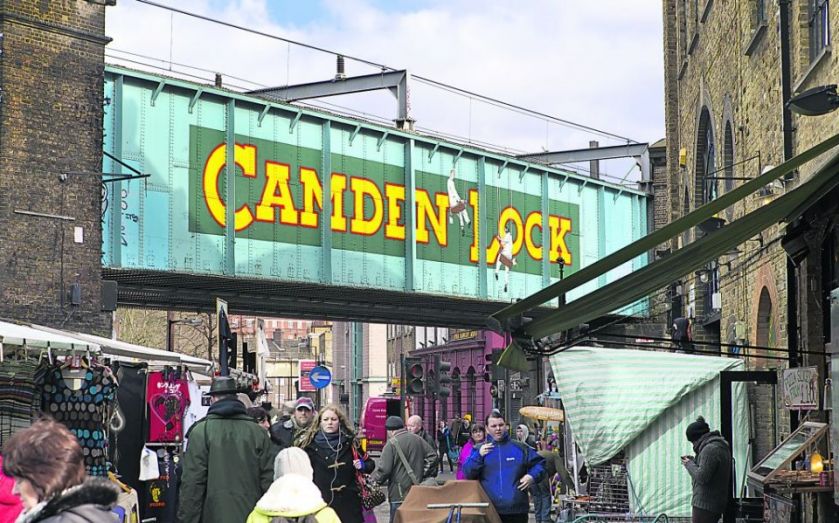Revealed: The London boroughs most likely to avoid a Brexit house price crash

So you’re a first-time buyer who has finally saved up enough to get on the housing ladder. All that’s left now is to decide which corner of the capital you’re going to invest your cash in.
That decision is arguably more important than ever, given that a recession is a very real possibility – particularly in the event of a no-deal Brexit. This would probably result in a fall in house prices, and some areas would be affected more than others.
Read more: Four tactics buyers must use to beat sellers in London’s housing market
So where should you buy now to get a first home that will hold its value in the event of a ‘Brecession’? Proportunity, a lender which offers first-time buyers loans to help them top up their deposits and access better mortgage rates, has used its data to rank every London borough in terms of its potential resilience.
East London tops the table
East London comes out strong, with Tower Hamlets – which includes areas such as Bow, Bethnal Green and Poplar which are already popular with first-time buyers – topping the chart.
Hackney and Newham came in third and fourth place respectively. North London’s Camden comes in second, while Haringey, which straddles the border between North and East, was fifth.
To compile the rankings, Proportunity analysed the market for flats – by far the most popular property type for first-time buyers – in a two square-kilometre section of each borough at various points between 2006 and 2013, around the time of the UK’s last recession, which started in 2008.
Read more: Focus on Willesden: North London homes where buyers can upsize
The characteristics that put these locations in pole position were all factors that areas which withstood the recession well last time had in common. These included having a below-average percentage of new-builds; a large millennial population; a lower population of retired people and baby boomers; proximity to well-used transport links and higher than average flat prices.
Of the top five, Newham currently has the lowest average house price at £473/sq ft and Camden, which is widely tipped as one of the best places to buy in London right now, has the highest at £935/sq ft.

Proportunity also took into account current market dynamics such as the number of housing transactions in a borough; crime rates, average number of rooms in a property and the amount of residential floor space within a borough.
The other local authority areas that made up the top ten were Brent, Islington, Southwark, Hammersmith & Fulham and Westminster.
Outer London most at risk from Brexit
“By analysing the performance of London flats in the last recession, we have been able to pinpoint the factors that feed into a local housing market’s resilience and identify potential safe havens going forward,” says Vadim Toader, founder and chief executive of Proportunity.
The five locations deemed most vulnerable to a house price crash were all in outer London. Bromley was at the bottom, preceded by Havering, Richmond-upon-Thames, Bexley and Sutton.
Wandsworth weathered the 2008 recession best according to the data, but changes in local market dynamics mean it has now slipped in to the bottom half of the table.
How Brexit-proof are house prices in your borough?
| London boroughs in order of resilience | Current average price/sq m |
| Tower Hamlets | £7,389 |
| Camden | £10,064 |
| Hackney | £7,479 |
| Newham | £5,090 |
| Haringey | £6,430 |
| Brent | £6,097 |
| Islington | £8,521 |
| Southwark | £7,340 |
| Hammersmith and Fulham | £9,247 |
| Westminster | £11,989 |
| Lambeth | £7,430 |
| Lewisham | £5,892 |
| Greenwich | £5,129 |
| Kensington and Chelsea | £12,264 |
| Ealing | £6,157 |
| Hounslow | £5,527 |
| Barking and Dagenham | £4,058 |
| Enfield | £5,012 |
| Waltham Forest | £5,981 |
| Harrow | £5,270 |
| Wandsworth | £7,832 |
| Hillingdon | £5,034 |
| Redbridge | £4,726 |
| Croydon | £4,622 |
| Barnet | £5,831 |
| Merton | £6,172 |
| Kingston upon Thames | £5,922 |
| City of London | £12,642 |
| Sutton | £4,823 |
| Bexley | £4,096 |
| Richmond upon Thames | £6,931 |
| Havering | £4,206 |
| Bromley | £4,764 |
The bottom five boroughs tended to have larger homes with more bedrooms, lower house prices and a low millennial population. Other low-ranking areas were the City of London, Kingston-upon-Thames, Merton, Barnet and Croydon.
“Buying a property is the single biggest investment decision most of us will ever make, so it is vital to do it in the most informed way possible,” Toader says.
“Clearly, big data isn’t a crystal ball. But globally, property markets respond in similar ways to fundamental shifts in population, age, crime, accessibility and of course, affordability. Now we have the tools to process these shifts, predict the reaction, and get that information to those who need it.”